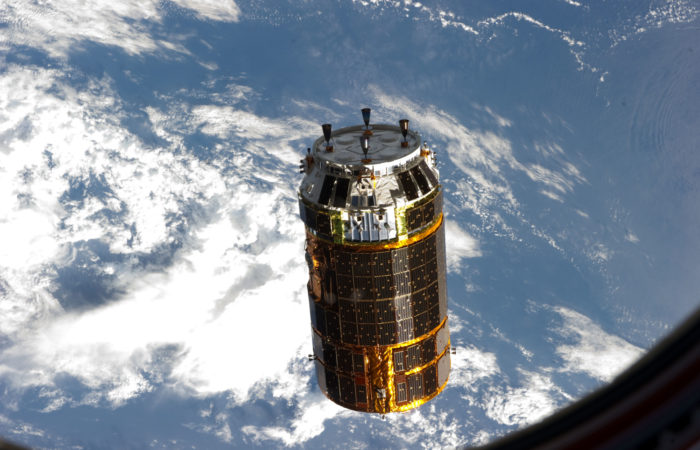Houston, TX – December 13, 2016 – The Japanese Space Agency JAXA’s H-II Transfer Vehicle (HTV) cargo spacecraft successfully berthed to the International Space Station (ISS) on its sixth mission on Tuesday, December 13.
The berthing occurred after a four-day flight to the station following the spacecraft’s launch Friday evening local time on an H-IIB rocket from the Yoshinobu Launch Complex at the Tanegashima Space Center. The cargo ship arrived with eight NanoRacks customer payloads onboard.
With HTV-6, we are thrilled to welcome the first ever Australian payload on the space station developed by Sydney startup Cuberider. Cuberider aims to give high school students the opportunity to learn valuable STEM skills by designing and coding experiments to be tested in space on the ISS.
“We are very excited to continue the NanoRacks tradition of bringing nations to the space station for the first time- we work every day to make space something accessible to anyone around the world who require in-space services or research opportunities,” says NanoRacks CEO Jeffrey Manber. “NanoRacks brought Vietnamese, Peruvian and Lithuanian projects to ISS, and we are now honored to bring Australia’s first Space Station-bound payload to orbit.”
Also arriving at station are two university research demonstrations. The Radiation Tolerant Computer Mission on the ISS (RTcMISS) developed by Montana State University will test a new computer system designed to withstand the harmful effects of space radiation, to demonstrate the system’s ability to work in the real space environment.
The Dependable Multiprocessor experiment (DM-7) developed by Morehead State University and Honeywell Aerospace is a NanoRacks External Platform (NREP) payload, funded by the Center for Advancement of Science in Space (CASIS), will achieve TRL7 (Technology Readiness Level 7) by demonstrating a small, light-weight, low-power, low-cost, COTS-based (Commercial-Off-The-Shelf), high performance computing cluster controlled by software designed to significantly increase the amount of onboard science and autonomy processing by increasing computing speed, offering a variety of fault tolerance modes, and reducing computing errors in the space environment.
NanoRacks is also pleased to further our relationship with Spire for their LEMUR-2 satellites. Adding four more CubeSats, Spire is building on their mission to provide close to real time information from anywhere on Earth via their small satellites.
Additionally, the fifth Technical Education Satellite (TechEdSat-5) was also delivered to continue testing a space brake designed to allow payload return to Earth, introducing a new modulating exo-brake capable of changing its surface area allowing the satellite to enter the atmosphere more precisely. TechEdSat is a collaboration between San Jose State University, University of Idaho, and NASA Ames. The CubeSats will be deployed at a later date via the NanoRacks CubeSat Deployer Program.
NanoRacks would like to thank JAXA, the NASA International Space Station program, all ISS partners, and all our customers for their continued support of NanoRacks operations on the space station.
Follow NanoRacks on Twitter for continued updates.
About NanoRacks
NanoRacks LLC was formed in 2009 to provide commercial hardware and services for the U.S. National Laboratory onboard the International Space Station via a Space Act Agreement with NASA. NanoRacks’ main office is in Houston, Texas, right alongside the NASA Johnson Space Center. The Business Development office is in Washington, DC. Additional offices are located in Silicon Valley, California and Leiden, Netherlands.
In July 2015, NanoRacks signed a teaming agreement with Blue Origin to offer integration services on their New Shepard space vehicle. NanoRacks, along with partners at ULA and Space Systems Loral was also recently selected by NASA to participate in the NextSTEPs Phase II program to develop commercial habitation systems in low-Earth orbit and beyond.
As of July 2016, over 375 payloads have been launched to the International Space Station via NanoRacks services, and our customer base includes the European Space Agency (ESA) the German Space Agency (DLR,) the American space agency (NASA,) US Government Agencies, Planet Labs, Urthecast, Space Florida, NCESSE, Virgin Galactic, pharmaceutical drug companies, and organizations in Vietnam, UK, Romania and Israel.

